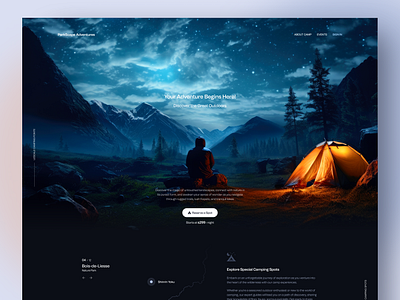Vital Tips for Crafting High-Impact Web Site Styles
In the realm of digital marketing, the style of an internet site offers as an important touchpoint for involving potential clients. To create high-impact internet site layouts, one need to take into consideration essential aspects such as audience understanding, user experience, and visual pecking order.
Understand Your Target Market
Comprehending your audience is fundamental to effective internet site layout. A web site that resonates with its site visitors is typically the result of comprehensive research study and insights into individual choices, demographics, and habits. Identifying target customers permits developers to tailor web content, visuals, and performances that meet their certain demands, enhancing interaction and fulfillment.
To efficiently understand your audience, start by carrying out demographic evaluations to gather data on age, gender, location, and rate of interests. This info works as a foundation for developing individual personalities, which stand for the key characteristics of your target audience. These personalities guide decision-making in design elements and material method, making certain alignment with customer expectations.
Furthermore, evaluating individual behavior via devices like Google Analytics can reveal exactly how visitors engage with your site. Metrics such as bounce rates and time on page can highlight areas that need improvement or change. Individual studies and feedback likewise supply indispensable understandings into preferences and pain points.
Ultimately, a deep understanding of your target market is not simply beneficial yet vital. It encourages designers to produce even more pertinent, enticing, and practical web sites that cultivate a positive user experience and drive desired end results.
Prioritize Customer Experience
When developing an internet site, prioritizing individual experience (UX) is extremely important to attaining both user fulfillment and company goals. A well-crafted UX ensures that visitors can navigate the site easily, find the details they need, and involve with material properly. To accomplish this, it is crucial to take on a user-centered style strategy that entails understanding individual needs, choices, and actions.
Begin by performing detailed research study, consisting of individual surveys and usability testing, to collect insights right into just how individuals interact with your website. This data must notify layout choices, ensuring that layouts and features line up with individual expectations. Structured navigating is important; visitors should be able to situate information quickly without unneeded clicks or confusion.

Last but not least, make sure that your website comes to all individuals, consisting of those with impairments. Following ease of access standards not only widens your target market but also fosters inclusivity. By prioritizing UX, you lay the foundation for a successful web site that satisfies both individual needs and service objectives.
Embrace Visual Hierarchy
A well-structured aesthetic hierarchy plays a considerable function in boosting individual experience by directing visitors' attention to one of the most vital aspects of an internet site. By tactically setting up material, developers can create a clear path for users to follow, ensuring they involve with vital information effectively.

Furthermore, the placement of elements on the page is critical. Leading the viewer's stare via the design can be achieved by placing vital details on top or in the facility, where users typically start their aesthetic trip. Including whitespace around components can also boost quality, making it simpler for customers to refine details without feeling bewildered.
Lastly, utilizing typography properly adds to visual hierarchy. Different typeface weights, sizes, and designs can signify relevance, assisting customers via the web content effortlessly. By accepting these principles, developers can create an instinctive experience that cultivates interaction and encourages individuals to explore even more.
Enhance for Mobile
Mobile optimization is crucial in today's digital landscape, as a significant section of web website traffic originates from smart phones. To guarantee a smooth individual experience, sites must be made with mobile customers in mind. This involves using receptive internet layout methods that adjust the layout, pictures, and message to fit numerous screen sizes while keeping performance and visual appeals.
First, prioritize packing rate, as mobile More Info individuals typically run on slower networks. Lessen and maximize pictures code to boost performance. Additionally, navigation should be intuitive; think about applying a simplified food selection that allows easy accessibility to important web pages without overwhelming users.
Touch targets, such as web links and switches, have to be suitably sized, ensuring they are quickly tappable without errors. In addition, make sure that forms are mobile-friendly by decreasing input fields and making use of dropdowns where applicable, simplifying the customer experience.
Finally, test your web site throughout different mobile phones and internet browsers to determine any kind of problems that may affect usability. By focusing on mobile optimization, you not just improve customer fulfillment however likewise positively affect your site's online search engine ranking, hence bring in more visitors and enhancing overall interaction.
Implement Strong Branding
Creating a well-known and cohesive brand name is essential to establishing a strong on the internet presence. A distinct brand not just separates you from competitors yet likewise fosters count on and loyalty amongst your audience. To carry out strong branding, start by creating a clear brand name identification that envelops your objective, worths, and vision - website design copyright. This identity should be mirrored regularly throughout all digital touchpoints, including your web site, social media, and e-mail communications.
Aesthetic aspects such as logos, color pattern, and typography play an essential role in branding. Select a shade palette that reverberates with your target audience and shows your brand character. Ensure that your logo is flexible and plainly presented on your site, improving brand name acknowledgment.
Content is equally crucial; your intonation must straighten with your brand identification, whether it's professional, pleasant, or reliable. Engaging narration can additionally enhance your brand, creating an emotional link with individuals.
Final Thought
In final check that thought, crafting high-impact website designs requires a diverse method that encompasses comprehending the audience, focusing on user experience, and welcoming visual pecking order. By incorporating these elements, web sites can properly involve users, assist in smooth navigation, and foster emotional Your Domain Name connections that improve brand identity.
To create high-impact site designs, one need to take into consideration necessary components such as target market understanding, individual experience, and visual power structure.When designing an internet site, prioritizing individual experience (UX) is critical to achieving both user contentment and company objectives.Begin by performing extensive study, consisting of individual studies and functionality testing, to collect understandings right into exactly how customers engage with your website. To ensure a seamless individual experience, websites must be developed with mobile individuals in mind.In verdict, crafting high-impact internet site designs demands a multifaceted approach that encompasses recognizing the audience, prioritizing individual experience, and welcoming aesthetic power structure.